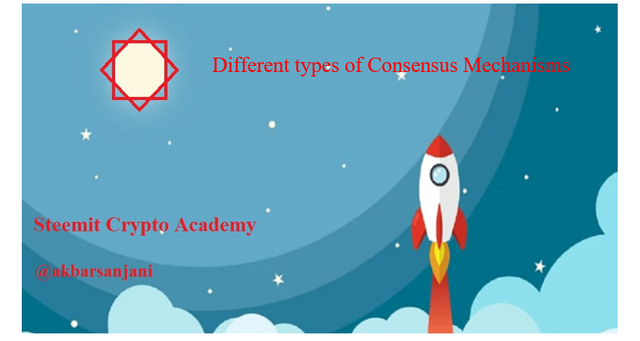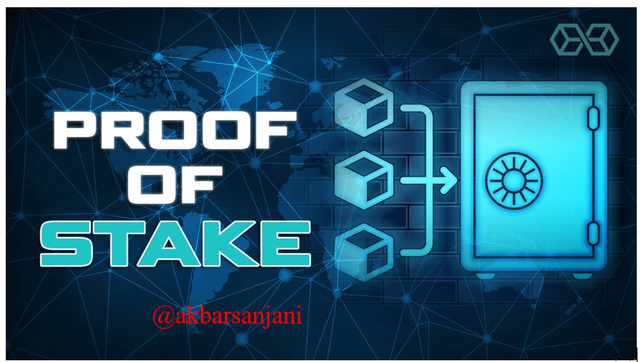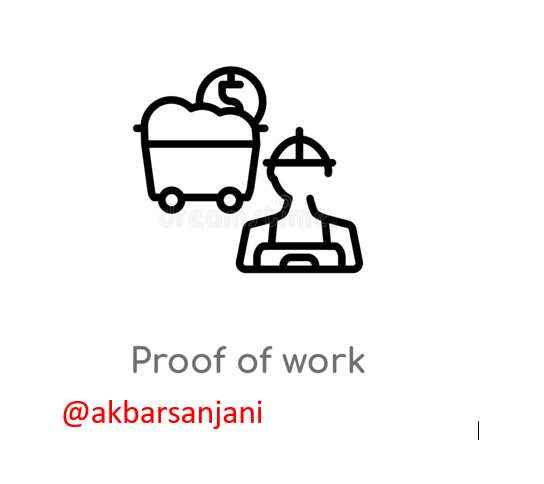Different types of Consensus Mechanisms- Steemit Crypto Academy Season 4 - Homework Post for Task 6

Good night everyone, steemians, blogers, readers, and crypto lovers. I will start a positive activity tonight because life must always be productive and tonight I will write a post about cryptocurrency on my blog to participate in the Steemit Crypto Academy Homework Post for Task 6. This class I will be taking follow professor @sapwood class. In this class, we will learn and share knowledge about “Different types of Consensus Mechanisms” based on the following questions.
1)What is the difference between PoW & PoS? Advantages & Disadvantages? Which one is better in scaling Capacity? Examples?
Question 1:
What is the difference between PoW & PoS?
Proof-of-Stake (PoS)
Consensus on crypto assets which means that users can mine or validate transactions of users' crypto assets, with the amount in the hands of the user. The more crypto assets mined by users, the more bargaining power of a crypto asset will be increased.

Proof of Stake can provide a small gap for crypto-asset miners who want to attack or manipulate a crypto-asset network.
Proof of Work (PoW)

The mechanism used on the blockchain to verify the transactions carried out. The verification process requires the user to perform hash solving quickly so that income will be given when completing work on the blockchain. The faster you complete the faster you will get paid.
A system that aims to prevent cyber attacks, such as spam emails, or attacks that can drain a computer system, by sending fake requests. POW itself can describe a system that is feasible to prevent malicious use of power.
Difference between PoW and PoS
Proof of work is useful for determining how the blockchain reaches consensus. How the network ensures transactions are valid and cannot do anything unwanted, such as profit by fraudulent means.Proof of Stake benefits derived from this method is a more equal mining system, transactions are more directed, and do not use a lot of electricity. Proof of Stake (PoS) can be an alternative, PoS is included in the algorithm and has the same goals as a POW, but is more efficient. Efficient in use.the following is the difference between PoS and PoW:
| proof of work (PoW) | proof of stake (PoS) |
|---|---|
| PoW Transaction validation is determined by solving a cryptographic mathematical puzzle on the blockchain. | PoS Transaction validation can be determined by the amount of capital on the blockchain network. |
| PoW The device used greatly affects the probability of the miner. | PoS The latest block validation depends on the number of coins held on the blockchain network. |
| PoW Forking on the blockchain can help hackers gain control of the network for 51% of the computing power. | PoS There is no financial incentive to validate copies of transactions on the blockchain, making it difficult for hackers to own 51% shares. |
| PoW Rewards earned by solving cryptographic math puzzles quickly, thus earning coins in new blocks. | PoS Validators receive fees from the invested blockchain network. |

Question 2:
Advantages & Disadvantages?
Advantages Proof of Stake (PoS)
-Highly efficient and energy-saving
-Requires very few resources
-No rewards or counterfeit transaction fees
-there are additional security rules for gifts to counterfeiters.
Disadvantages Proof of Stake (PoS)
-No need to install useful hardware to improve performance and can forge blocks just by staking their tokens.
-Has a higher capital value so that it is more profitable for miners with large capital to gain than miners with sufficient capital.
Advantages Proof of Work (PoW)
-Can avoid Distributed of Service (DOS) attacks
-Fair and transparent
-Increase the interest of miners to maintain individual networks
Disadvantages Proof of Work (PoW)
-Using professional equipment, very expensive computer, electrical power
-Only for validating blocks-Insufficient rewards so miners are reduced

Question 3:
Which one is better in scaling Capacity? Examples?
The Proof of Stake algorithm is conceptualized to eliminate miners by replacing them with "validators". Validators do not require strong processor power to validate each block, but rather with the power of their funds on blocks that are believed to be valid. Validators increase the chances of wasting more money to validate blocks. Validators only receive a rebate of the fees included in the block, in proportion to what is staked.
Therefore Proof of Stake (PoS) is present as an alternative to the shortcomings that exist in Proof of Work (PoW). Miners can mine their crypto assets and validate transactions, according to ownership of crypto assets, so there is no need to involve computers which result in increased electricity consumption. .
Example of Proof of Stake
If you bet your coins by 50 coins and your competitor bets 100 coins, then the validator of the next block will choose the one with the highest total value at stake. On this Proof of Stake (PoW) you only need to prepare more capital to win the bet because it gets bigger. Your capital, the higher your chances of being selected as the next validator.
The majority of cryptocurrencies currently still use Proof of Work, but there have been many cryptocurrencies that have switched to Proof of Stake. Proof of Stake has benefits for holders because they risk coins in exchange for prizes. The following is an example of a cryptocurrency that uses PoS:
- Ethereum
Ethereum 2.0 upgrade from ethereum blockchain, which shifts PoW consensus protocol to PoS. Ethereum launches beacon chain to deploy POs protocol to Ethereum.etc

Conclusions
Proof of Stake is here for an alternative to the shortcomings of Proof of Work. POs only use validators to bet their capital while PoW has to solve complex mathematical puzzles by relying on processor capabilities so that it requires an extraordinary amount of computing power, large electricity consumption, and has a high set up cost.
